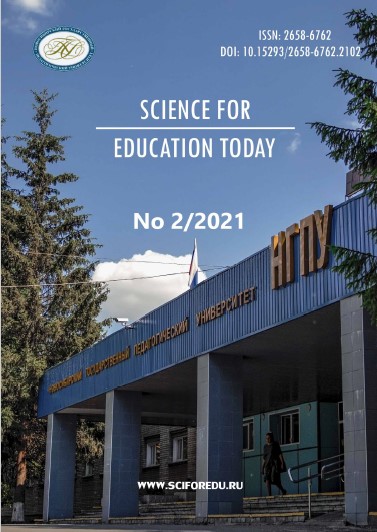Билингвистическое пространство образования как ресурс развития творческих способностей и социально-психологической адаптации детей с нарушением слуха
Bilingual learning environment as a resource for the development of creative abilities and socio-psychological adaptation of hearing-impaired children
Author(s): Olga Yuryevna Piskun, Inessa Solomonovna Baskina, Valentina Anatolyevna Petrochenko, Elena Dmitrievna Shtatnyh, Ruben Oganesovich AgavelyanSubject(s): Sociolinguistics, Descriptive linguistics, School education, Educational Psychology, Social psychology and group interaction, Developmental Psychology, Inclusive Education / Inclusion, Sociology of Education
Published by: Новосибирский государственный педагогический университет
Keywords: Keywords Children with hearing impairment; Bilingual educational environment; Development of creative abilities; Socio-psychological adjustment; Personality-oriented paradigm; Russian sign language;
Summary/Abstract: Introduction. The article addresses the problem of bilingualism of deaf children in the educational process with the main focus on enhancing their creative abilities and socio-psychological adjustment. The purpose of the research is to study and describe the resource for the development of creative abilities and socio-psychological adaptation of children with hearing impairment. Materials and Methods. In this paper the authors provide a review of Russian and international studies into the role of bilingualism in deaf education. The evaluation of creative abilities and socialization of children with hearing impairment was conducted using the following projective methods: ‘Measurement of creative thinking’ (E. Torrance’s Incomplete figure test), N. V. Shaidurova’s measurement of older preschoolers’ creativity, ‘A picture of the family’ by T. G. Khomentauskas (adaptated by O. Y. Piskun and R. O. Agavelyan) as well as sets of survey methods including M. A. Panfilova’s “Sociometric questionnaire for children” and V. V. Tkacheva’s “Questionnaire for parents”. The sample consisted of 16 senior preschool age deaf children and their parents (n = 16). Results. Results. The authors identify the features of the development of creative abilities in children with hearing impairment: a slow formation of verbal speech, role-play interaction, and abstract thinking. The study reveals low socio-psychological adaptation, high parental deprivation and anxiety. In some cases, children are deprived of constructive interaction with their parents. It is emphasized that bilingual learning environment can be considered as a tool of deaf children’s social adjustment. The relevant learning environment can be created within the center of development and psychological and educational support for individuals with special education needs. Competent professionals (including those with disabilities) who use Russian sign language are motivated to communicate with deaf children and their parents for subsequent successful social integration and adjustment. Conclusions. The study concludes that within a personality-centered paradigm of a bilingual educational environment for creative development of children with hearing impairment and their socio-psychological adjustment, the leading factor is the bilingual approach to creating the center for psychological and educational support for families with the main focus on constructive interaction with deaf children.
Journal: Science for Education Today
- Issue Year: 11/2021
- Issue No: 2
- Page Range: 172-196
- Page Count: 25
- Language: Russian

